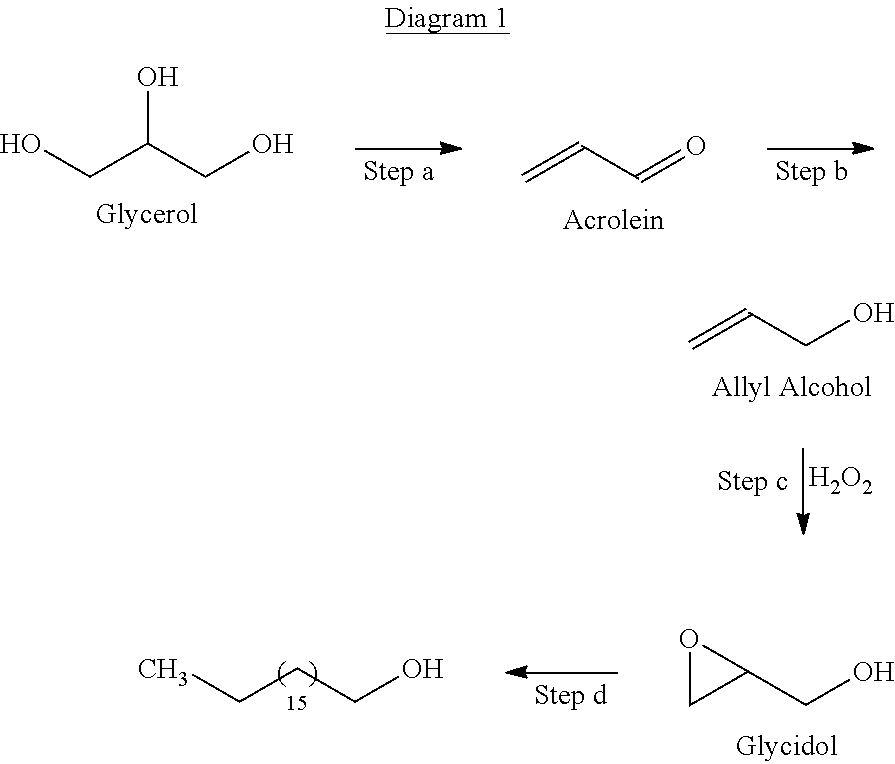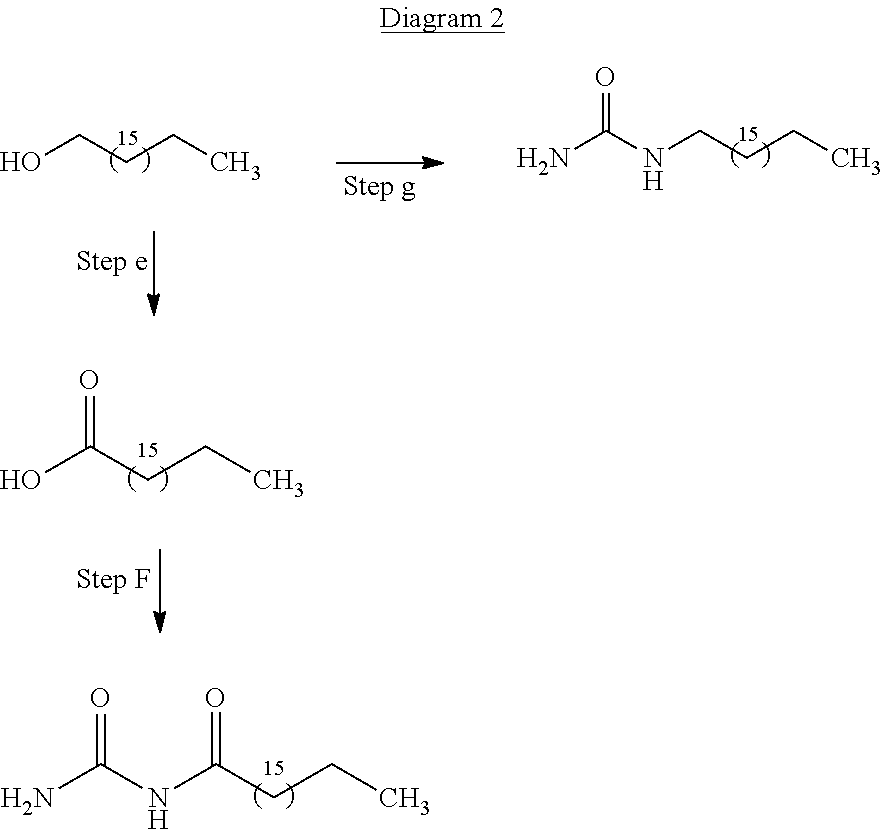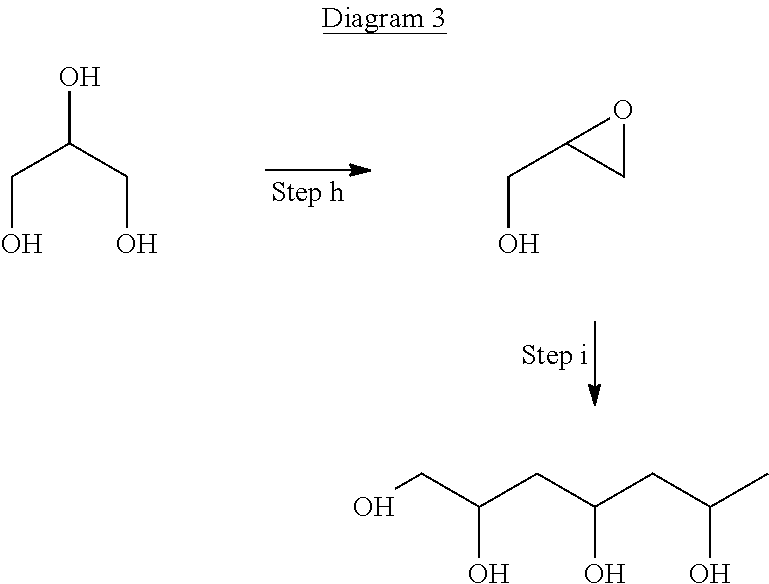Epoxidation of glycerol and derivatives therefrom
a technology of glycerol and glycerol derivatives, which is applied in the preparation of nitric acid esters, single substance explosives, weapons, etc., can solve the problems of unfavorable handling of explosives, cost of relative loss of explosive power, and explosives that exhibit relatively slow reaction rates, etc., and achieve high surface area to volume ratio
- Summary
- Abstract
- Description
- Claims
- Application Information
AI Technical Summary
Benefits of technology
Problems solved by technology
Method used
Image
Examples
Embodiment Construction
[0045]A surfactant, for use in an emulsion explosive, is produced in a first aspect of the invention using glycerol, which is produced as waste product from the synthesis of bio-fuels and is a readily and cheaply available feedstock for the production of the surfactants.
[0046]A general reaction sequence for the production of an aliphatic alcohol intermediate from glycerol in the manufacture of a surfactant is illustrated in Diagram 1.
[0047]In step (a), glycerol is dehydrated to acrolein (propenal), an unsaturated aldehyde, aided by an acidic catalyst, such as a zeolite catalyst, for example H-ZSM5.
[0048]In step (b) acrolein is hydrogenated to allyl alcohol over a transition metal catalyst, which includes, for example, one or more of cadmium, silver or iron supported on a silica or alumina support.
[0049]In step (c) allyl alcohol is epoxidized, with hydrogen peroxide, over a titanium molecular sieve catalyst, for example TS-1, or a gold containing catalyst, to form glycidol.
[0050]In s...
PUM
| Property | Measurement | Unit |
|---|---|---|
| Length | aaaaa | aaaaa |
Abstract
Description
Claims
Application Information
 Login to View More
Login to View More - R&D
- Intellectual Property
- Life Sciences
- Materials
- Tech Scout
- Unparalleled Data Quality
- Higher Quality Content
- 60% Fewer Hallucinations
Browse by: Latest US Patents, China's latest patents, Technical Efficacy Thesaurus, Application Domain, Technology Topic, Popular Technical Reports.
© 2025 PatSnap. All rights reserved.Legal|Privacy policy|Modern Slavery Act Transparency Statement|Sitemap|About US| Contact US: help@patsnap.com



